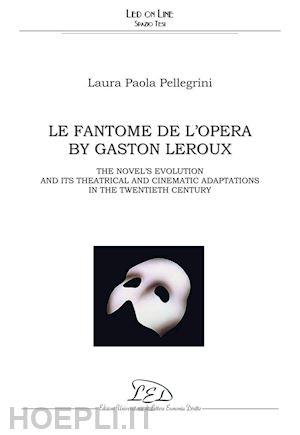Le Fantôme de l’Opéra is a multifaceted novel. It is a gothic novel, because it speaks of obscure presences, sadows, ghosts, fate and magic; it is a romantic novel, just as Gaston Leroux’s indolence was romantic, leading the author to a certain gloomy and bittersweet melancholy; it is a decadent novel, because its protagonist is a real dandy, theatrical and excessively elegant, who loves to surround himself with baroque furnishings, mirrors, velvet and gold, just as Wilde or Huysmans would have liked; it is a symbolist novel, filled with countless metaphors dear to fairy-tale narrative, such as the key, the ring, the kiss, the lake, the river; it is a surrealist novel, as Jean Cocteau declared, since it tells of dreams, vast and obsessive spaces, as in Louis Carroll’s Alice in Wonderland; it is a modern novel that narrates the voyage into the inner depths of ourselves, connected to the world of Psychoanalysis and to Sigmund Freud; it is a detective novel, for the language of investigation that appears in certain passages and for its myriad of mysterious crimes; it is a love story that tells of an unhappy, unrequited passion. Le Fantôme de l’Opéra is a novel that contains many novels and many styles, and that touches us deeply because it speaks of emotions and feelings. It is a popular novel that tells stories about each one of us, even if these stories seem incredible. It is an extraordinary novel that inspired many other works: novels, films, television programs, circus performances, ice-skating phantasmagoria. It inspired these from its first appearance in 1910, to this day, and will continue to inspire others in years to come.














